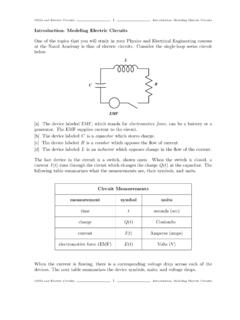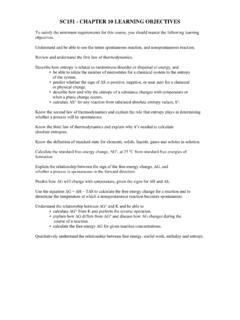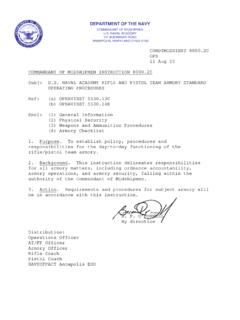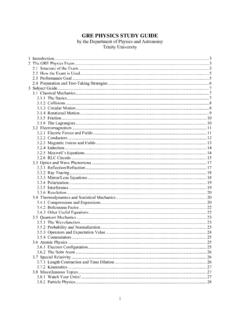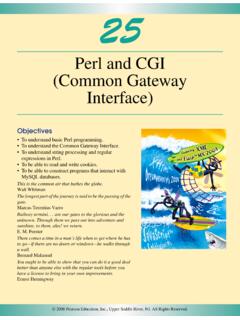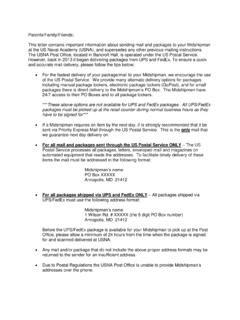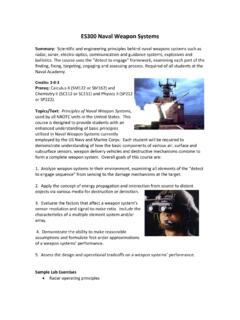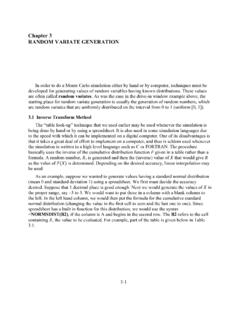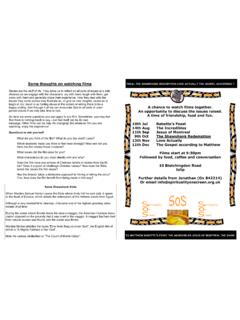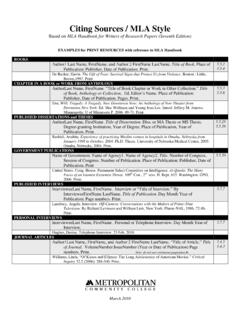Transcription of Ethics Movie Training - USNA
1 Ethics Movie Training The VADM James B. Stockdale Center for Ethical Leadership, located in Luce Hall in room 201, offers a set of facilitator guides centered on ethical themes explored in recent film. The Ingersoll Library, located in the Stockdale Center, houses many movies that focus on ethical dilemmas. Each summer, newly graduated Ensigns and Second Lieutenants work with Center staff in crafting discussion guides around these films. This document is the second collection of such guides. Each facilitator s guide in this document is a self-contained brief on the film it focuses upon. Each guide first presents the Stockdale Center s ethical decision-making model, based upon research on the psychology of ethical decision making.
2 The model presents a procedure that has been distilled from that research. The four-step procedure also allows incorporation of more traditional ethical theories and outlooks, while paying attention to stresses and emotions involved in such dilemmas. The guides then give brief synopses of each film. They conclude with a selection of carefully crafted discussion questions that focus on the ethical dimensions of the films, and the psychological and emotional factors that are portrayed. Each of these films can checked out for use in Saturday Training or other such venues. They can also be found at the Nimitz Library. Midshipmen may also contact the Stockdale center ) if there is a Movie not currently available that they would like to have included in the library.
3 If the suggestion is approved, a discussion guide will be created for that Movie . Each year, a selection of new discussion guide is added to the library. This volume presents discussion guides for the following movies : - Groundhog Day - King Arthur - Law Abiding Citizen - Lord of War - Philadelphia - The shawshank redemption - Source Code - Spiderman - Taken - The Truman Show Training Officers/Sergeants: If you are interested in using this program for SMT/GMT or other purposes, please contact the center to set up a time to check out the Movie and receive guidance on the use of the Training aid. Thank you for using our resources. We hope you find them stimulating and thought- provoking.
4 Groundhog Day Ethical Decision-Making Movie Discussion Movie Summary: This Movie is about a TV reporter named Phil Connors. He is a self-centered man who cares nothing about covering Groundhog Day in Punxsutawney, Pennsylvania. A snow storm causes the news team to stay in the town overnight. When Phil wakes up the next day, it is Groundhog Day again. This cycle continues for a long time until one day Phil changes his poor outlook on life, and the day after Groundhog Day finally comes. Ethical Decision-Making Basics: Ethics can be described as standards of behavior that one uses to decide how to respond to situations that have a moral component. In ethical decision making, a person uses standards of behavior to come to a decision and then act.
5 Although this process may seem intuitive, research shows that there are steps we all take in making ethical decisions. The four-step model shown below, based on the work of James Rest, describes how we move from moral awareness through moral action. The questions at each step reflect the work of Thomas Jones. They show how people s ability to make ethical decisions is affected by different moral intensity factors. The most common ones include: How much a particular social group (peers, friends, family) agrees that a given action is good or bad and what they will think about the decision maker How close the decision maker feels to the people affected by your decision How much the decision maker s actions harm or benefit someone How likely it is that something good or something bad will happen 2 Here s how the steps in the model work.
6 In the I feel step, you feel something about the situation in your body. Decide if this situation raises a moral issue by asking: 1. Am I violating my moral emotions if I do nothing? 2. Am I putting anyone at risk if I do nothing? 3. Is something bad likely to happen here? Check whether moral intensity factors are affecting you by asking: 1. Would my social group see a moral issue here? 2. How close do I feel to the people involved in this situation? In the I ask step, weigh different choices to distinguish right from wrong, better from worse, and between competing tensions. To weigh those choices, ask the following: 1. If I take action, is that fair or unfair?
7 Morally right or morally wrong? 2. What would someone I respect think is the best option? 3. If I take action, is that decision in line with my organization s or my society s rules and culture? Ask whether moral intensity factors are affecting your judgment: 1. What would my social group think about my actions? 2. How much harm could come to someone if I take action? What if I don t take action? 3. How likely is it that this situation will turn out badly if I don t take action? What about if I do take action? In the I think I will step, decide what to do or not to do, using the questions below: 1. What do I think I should do? 2. How much will what other people think about me influence my decision?
8 3. Do I intend to act on that decision? In the I act step, carry out your intention, even if there is great opposition. These questions may be helpful: 1. Do I follow through on this intention? 2. What may prevent me from acting on my intention? 3. What may help me follow through on my intention? This model can be used for everyday decisions, along with those that have more profound effects. This guide outlines the ethical dilemmas in Groundhog Day and then presents some examples for discussion. You can use many of the dilemmas or examples to illustrate this ethical decision-making process. 3 Ethical Dilemmas: 1. Phil is an extremely self-centered person who cares nothing for the people of Punxsutawney.
9 He finds the town he is reporting on unsatisfying. Is it ever acceptable to treat others as second-class citizens, as Phil does? 2. Phil wakes up the day after the blizzard forces his team to stay in Punxsutawney and realizes he is repeating the past day over again. He is confused, but uses the day for his own benefit. With each repeat of the day, he gains more knowledge about the people around him. Is it morally acceptable for him to use this knowledge for his own personal gain? What would you do with the knowledge? (Use the model to work through the dilemma for a particular scene.) 3. Eventually, after many repeats, Phil tries to kill himself to end the cycle.
10 Is suicide ever an ethical solution to a dilemma or hopeless situation? Why or why not? How would you have handled the situation? Other Ethical Questions: 1. The lies flow from Phil throughout the Movie as he realizes he can say whatever he wants, because the day will merely reset. Since the people he lies to will have no recollection of his lies, are the lies harmless? Is it still wrong for him to lie? If a lie will not affect someone in the long-term, is it okay? 2. After a time, Phil knows Groundhog Day inside and out. Is it right for him to interfere with the events of the day, regardless of his intentions? Should he let the events unfold as they should, or is it permissible for him to play God and change events?
